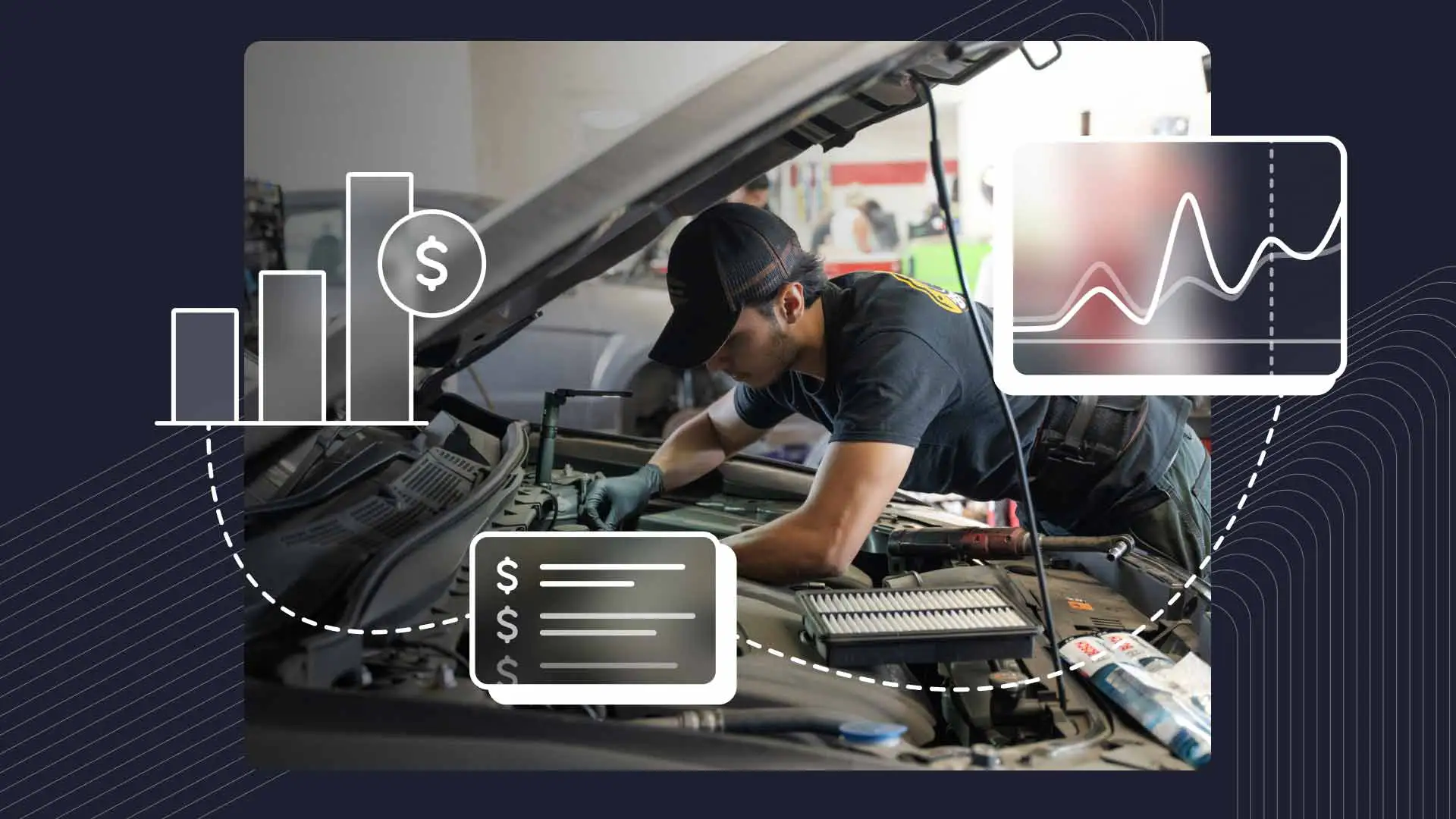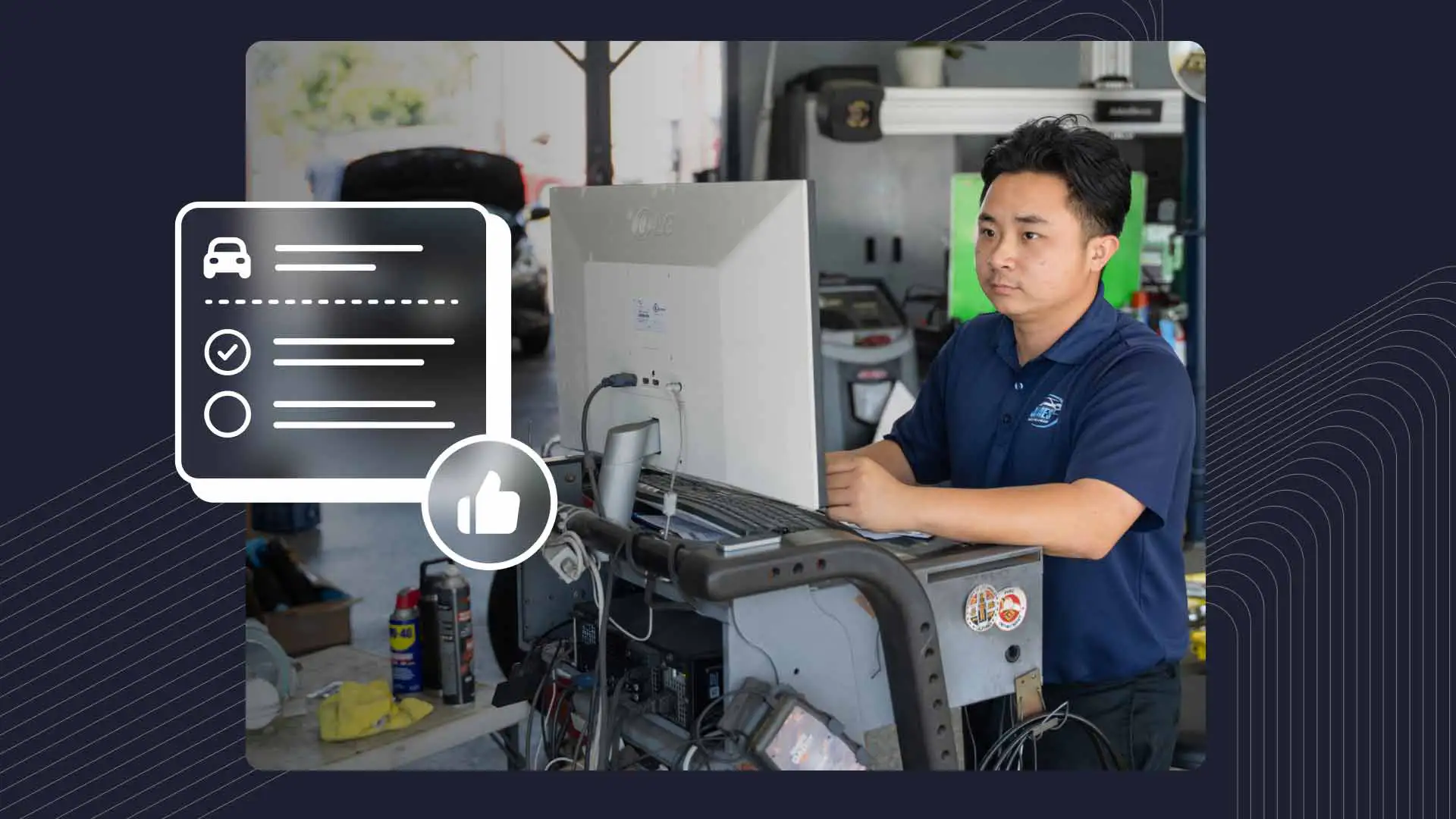This article summarizes “Shop Growth Through Social Media,” the second episode of Shopmonkey’s “The Road to Success” Speaker Series. This 40-minute video features candid conversation, tips, and best practices from Mad Hatter Auto Repair’s Zach Haver and Mike Kraus about mastering social media to increase shop brand awareness.
Haver co-owns Mad Hatter Auto Repair with his wife Lynn, who also works as the social media manager for the shop. The couple bought the first location for the shop in Omaha, Nebraska in 2017 before buying another location in Council Bluffs, Iowa in 2019. Kraus is the shop’s Chief Operations Officer.
With over 50 employees, a pool of techs eagerly anticipating job openings and multiple locations, Mad Hatter Auto Repair is doing something right. According to Haver and Kraus, much of this success is attributed to capitalizing on social media, which they first got into while re-branding the shop in 2020.
It’s since become a way of life, which the pair described while touching on their social media marketing theory, the importance of target demographics, and the particulars of creating original content.
Social Media Marketing Theory
Throughout this video episode, Haver and Kraus educate viewers about their social media approach while showing various content Mad Hatter has used and had success with. After a brief introduction by Shopmonkey Enablement Specialist Lukasz Konior, Haver delves into the theoretical basis of Mad Hatter’s social media marketing. Simple and effective, the company uses social media to create brand awareness as a means of competitive differentiation while “providing entertaining content so customers know us outside of business transactions,” Haver specified.
On multiple occasions, Haver stresses that Mad Hatter’s social media content doesn’t typically depict the shop “tearing cars apart.” Instead, Mad Hatter uses it to provide content that entertains audiences so that later, when “their car breaks down, they remember how we made them feel before they ever did business with us, and then they’ll choose us based on that fact,” Kraus explained. To that end, the shop’s social media strategy is about creating posts, engaging audiences, and tallying comments—instead of paying third-party marketers for impressions.
Shopmonkey Newsletter
Market your shop like a pro. Get practical tips delivered right to your inbox.
Content Creation
One of the more revealing points in the video is when Haver warns of the dangers of going with third-party marketing companies that create nearly identical-looking ads for competitors. Kraus then gets into the logistics of creating original content, which requires forming policies for “social media, a code of conduct, and confidentiality” that employees must sign to participate.
Additionally, shops need “a documented agreement between the individual and the business to use their name, image, and likeness,” Kraus reveals. Haver comments on the necessity of finding a target demographic and the most appropriate social media channels to reach it. This part of the presentation is informative as he details the demographics of people most likely to use popular social media channels like Facebook, TikTok, LinkedIn, and others while detailing how to engage them with an avatar.
Employee Engagement
Once shops have these pieces in place, the next step is finding by equipping them to create original social media content. Because employees represent the brand on social media channels, the best way to begin crafting content is “celebrating certifications, wins, and little things that they do around the shop,” Haver indicated. “Pump them up; show everyone how great they are.” The CEO went on to explain how this approach gets the technicians’ family members and friends to engage with the social posts, which helps to build the shop’s following. Once technicians get comfortable being on camera and the subject of social media posts, the goal is to entertain followers with content that’s typically unrelated to the auto repair business.
Haver detailed posting content themed around movies (like Top Gun 2), popular TikTok videos, and other trending topics. Haver described one social media video the shop made based on a weatherman in the area. “It actually got us tons of followers and it bridged the relationship with a local news station. Now they use us anytime they have questions about automotive,” Haver remarked. “We’ve actually been on the news about four or five times this last year with tons of free publicity, where they’re interviewing us about potholes or slick road conditions.”
The Big Picture
Haver’s example is a great one because it shows how can actually transcend social media to impact traditional media, too. The video ends with the pair explaining how their popularity on social media has translated into having technicians want to work for them, to the point that the shop no longer advertises to fill positions. This part of the video is tremendously useful for giving shops a crash course in social media marketing, complete with real-world examples and a host of benefits.
Watch the full episode for more detailed insight and practical advice on using social media to grow your shop.




